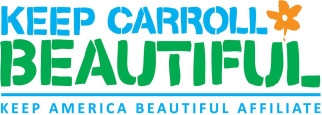Reuse & Upcycle in the garden
15 Days of Green Tips for 15 years of Keep Carroll Beautiful
Day 9 – Re-using and upcycling planting pots for the garden
This post is a part of the “15 Days of Green Tips for 15 years of Keep Carroll Beautiful” Virtual Birthday Celebration. Every day between April 8 and April 22, a member of KCB Board, Staff, or the public, will share their favorite tips on how to Reuse, Reduce, and Recycle!
Martyna Griffin, Executive Director of Keep Carroll Beautiful, is back with another round of garden projects. Gardening is a great hobby that can be made even better by reusing items you already have or diverting trash and recyclables from the landfills.
Planter pots
Having small containers for seed starting is essential to give your garden a good start. Of course, you can always buy seedlings at various garden centers, but many plants, like beans, melons, cucumbers, okra – do not like to be transplanted, and even if you buy plants that do well when moved from pot to dirt – at around $4 a six-pack of small plants or a 3-inch pot with a single plant – the cost adds up quickly.
(If you are buying transplants you can reuse the containers for summer veggies – just make sure you wash the plastic pots with hot water and soap and sundry them before each use to kill any mold or bacteria that may affect young plants. )
To preserve the roots and prevent the transplant-shock, you can go with biodegradable pots. “Peat pots of various sizes are an option, but I have issues with them decomposing slowly, trapping the roots. And every time I try to peel the peat back a bit, to allow root expansion, I pull the roots right off the plants. I also do not like the peat pellets that expand with water, as they leave little plastic nets all over my garden” said Martyna. Here are some easy alternatives for starter pots you can make at home.
Newspaper pots:
- Find an old magazine or newspaper. Cut into strips.
- Roll the paper loosely over a round object – bottle, can, toilet paper tube.
- Gently slide the paper of the can.
- Fold one end in – depending on the thickness of used paper – half an inch to an inch should be enough to keep the roll from unfolding.
- Fold the edge in around the roll. It does not have to be perfect!
- Press down to create a crease and then again down the middle. Cut the unfolded bottom of the pocket (you may have to experiment as the cut depends on the size of your tube size).
- Fold in the tabs.
- Your pot is ready! The small hole in the middle allows roots to get out when transplanted!
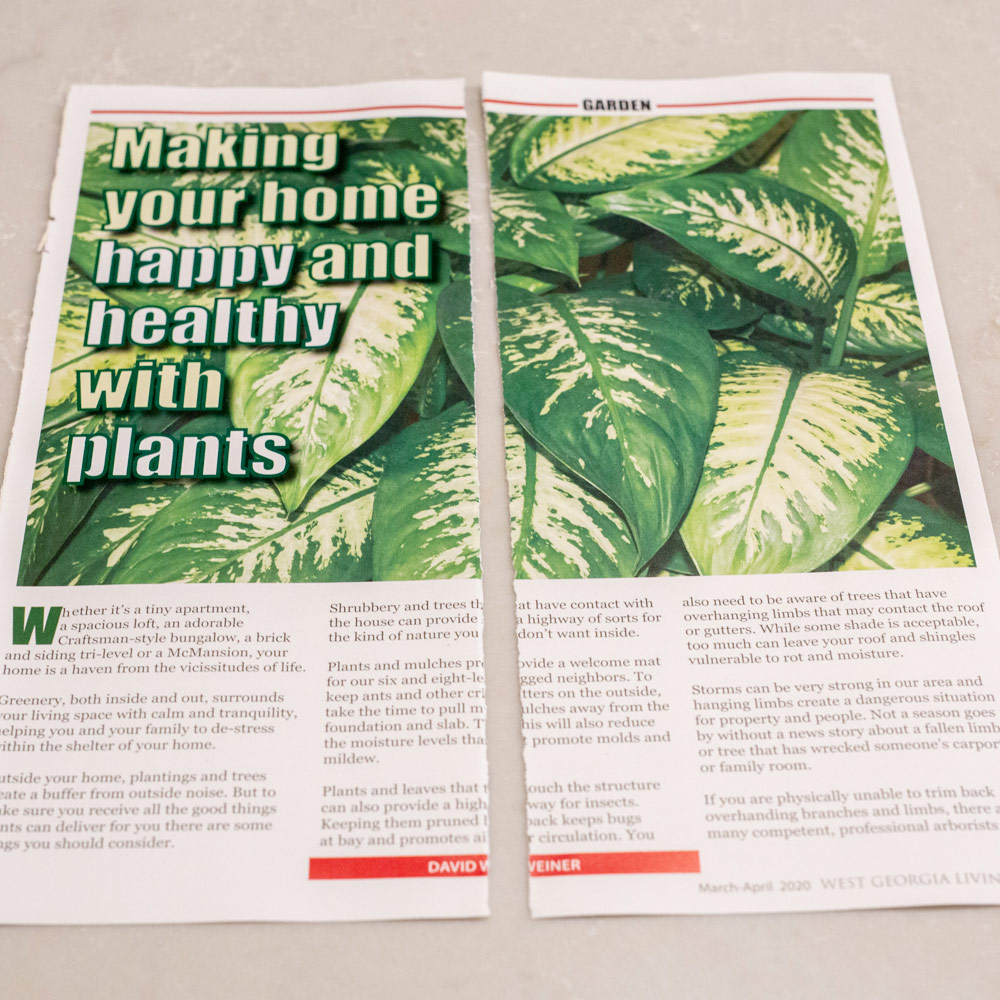








Toilet (paper towel) tube pots:
Start collecting empty rolls! They make awesome, sturdy little pots.

- Tubes should be cut to size – don’t make your pots too deep.
- You can keep the tubes round or crease them to make squarish boxes (square pots take less space and are easier to fill with dirt).
- You can also keep the bottom open, or cut little slits (like the newspaper pots above). Leave a little opening for the roots to push through!
- Keep your tubes ina cardboard box or a plastic dish so they stay up and keep their shape. Box gives you a good labeling option.

Reusing other materials
Yogurt lids to plant tags:


Old plants to compost and seed potting mix:
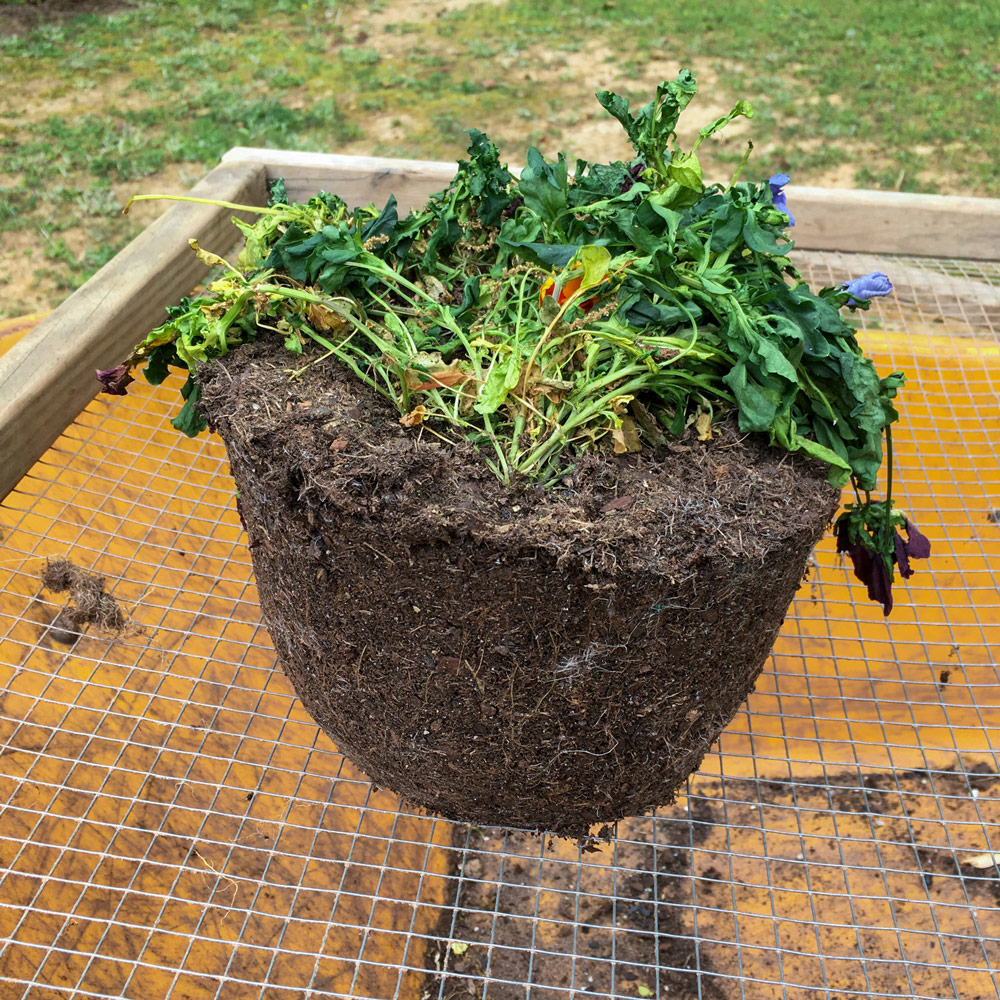
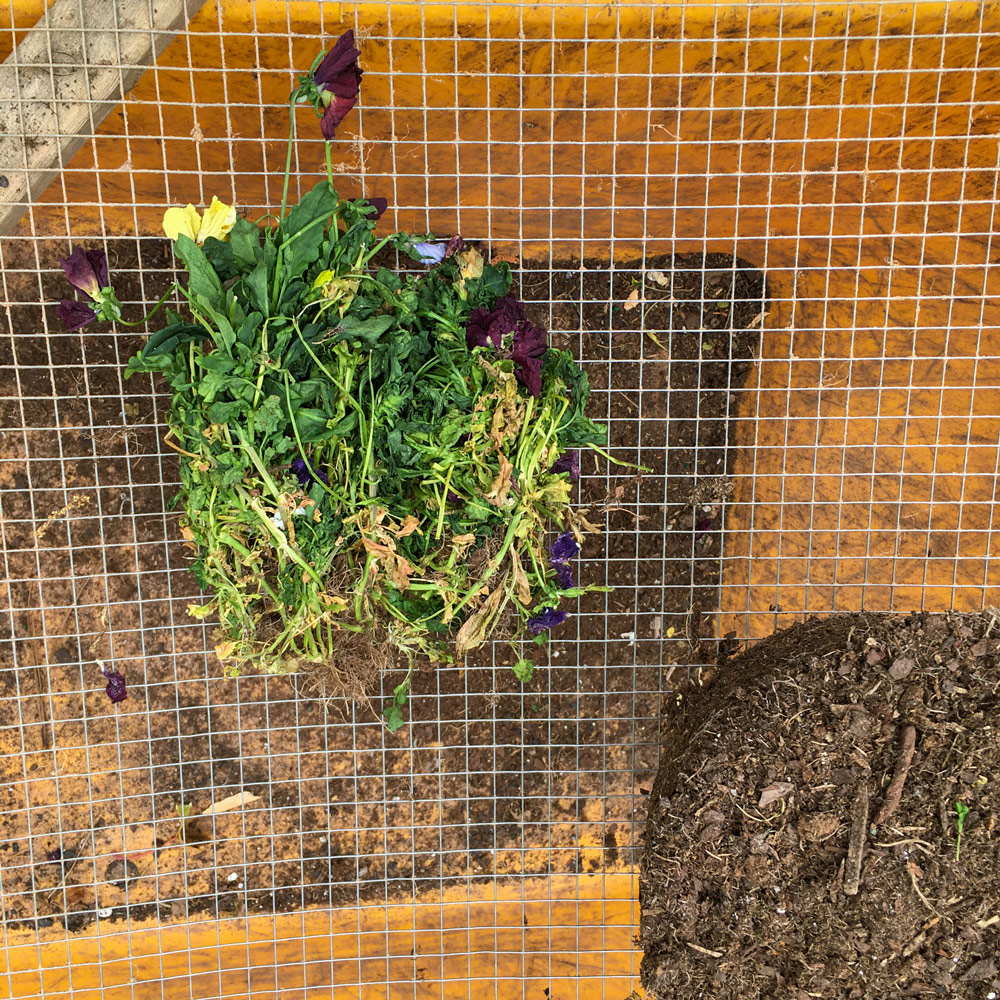
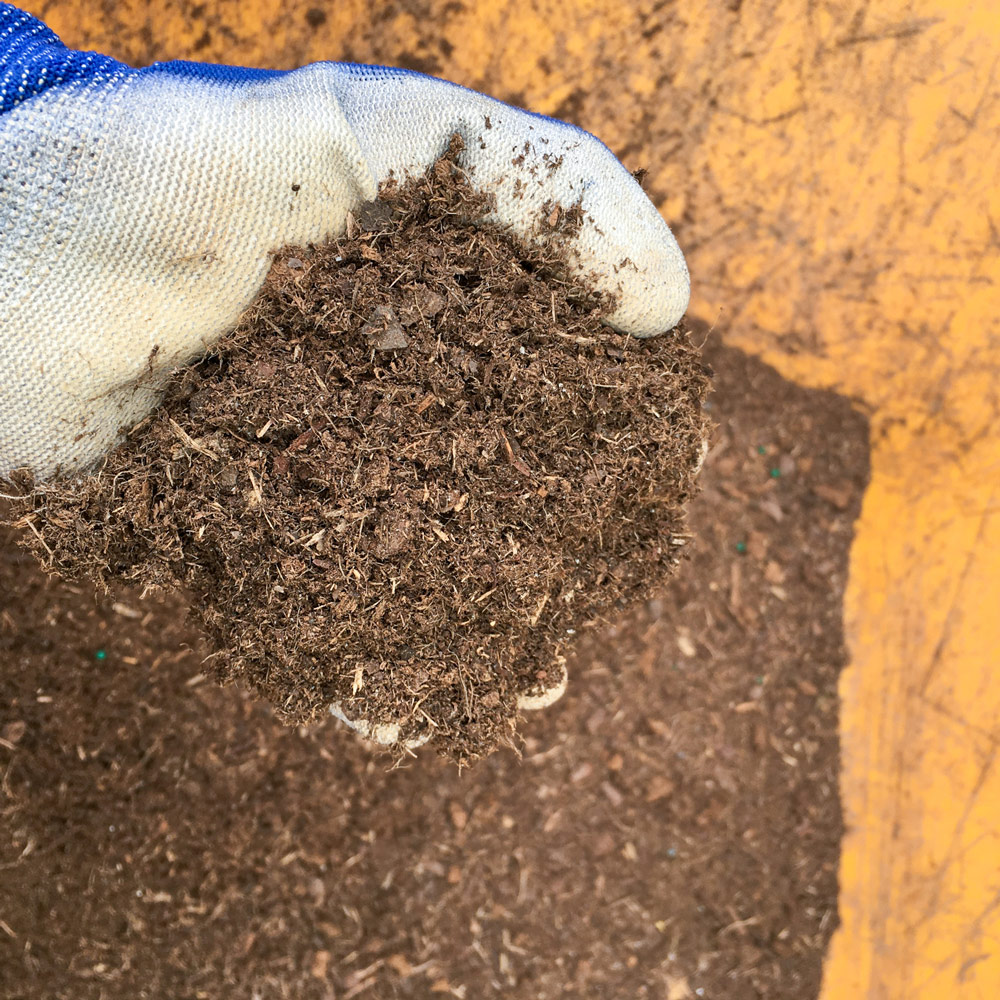
Old sheets and t-shirts to yarn:
- Cut off stitching and buttons.
- Snip your fabric every 1 to 2 inches.
- Tear the strips off.
- Roll or fold and use to tie plants to trellises, make teepees, and so on!

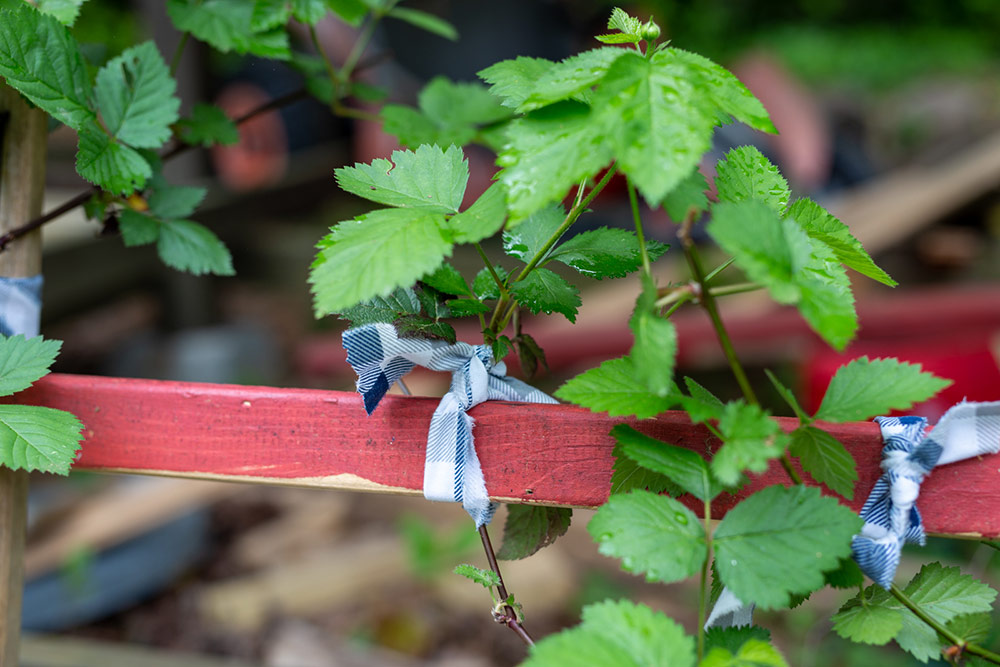
Reuse cake trays and covers:
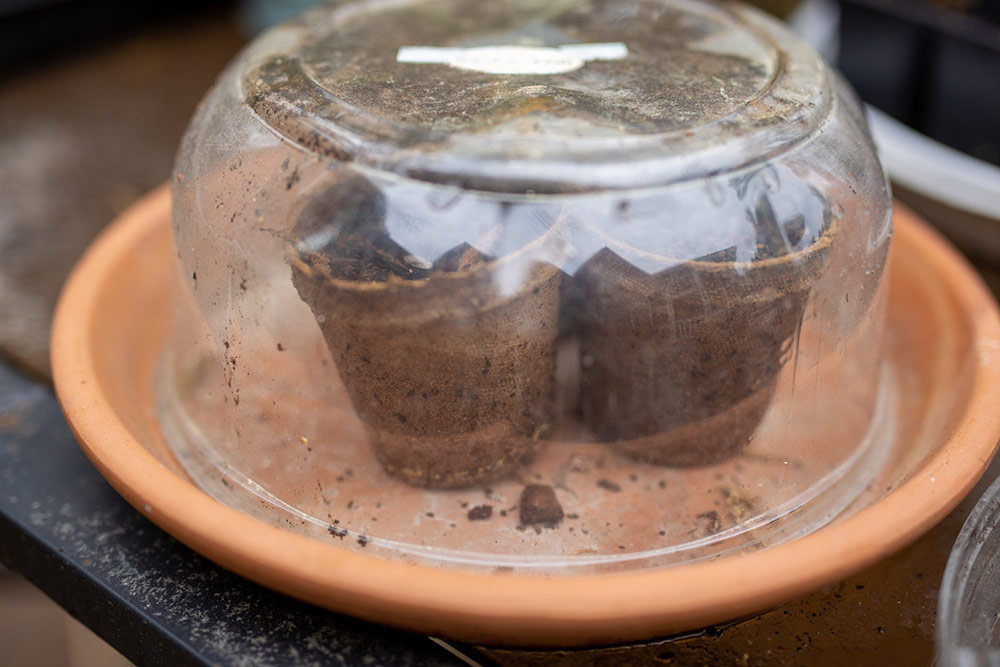


Reuse boxes and buckets:
- Use sturdy cardboard boxes for “dirty” storage. Line a box with a grocery bag to store potting mix.
- Reuse decorative buckets to carry your garden supplies! Baskets are great for picking fruit and veggies from your garden.

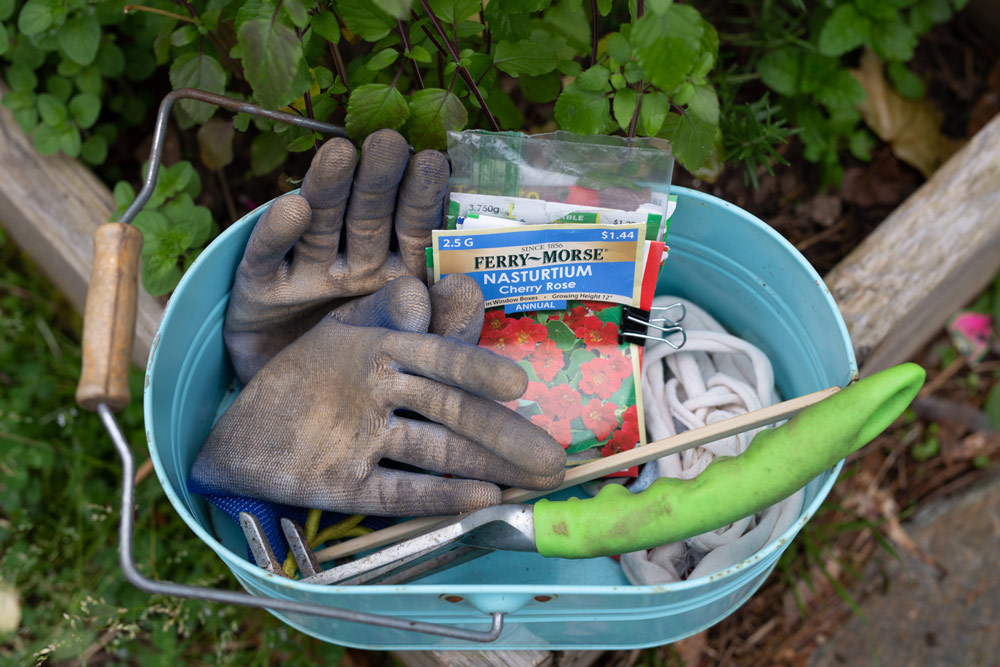
Recycle your plants!
- The beautiful flower you purchased in full bloom? Keep it in the pot under a deck or in the basement and put in the sun next year! Chances are it re-seeded itself and you can grow a new plant!
- Needed a pinch of an herb but had to buy a bunch? Stick them in a jar (reuse?) and enjoy the herbs over the next few days, or allow it to root and plant in the dirt!
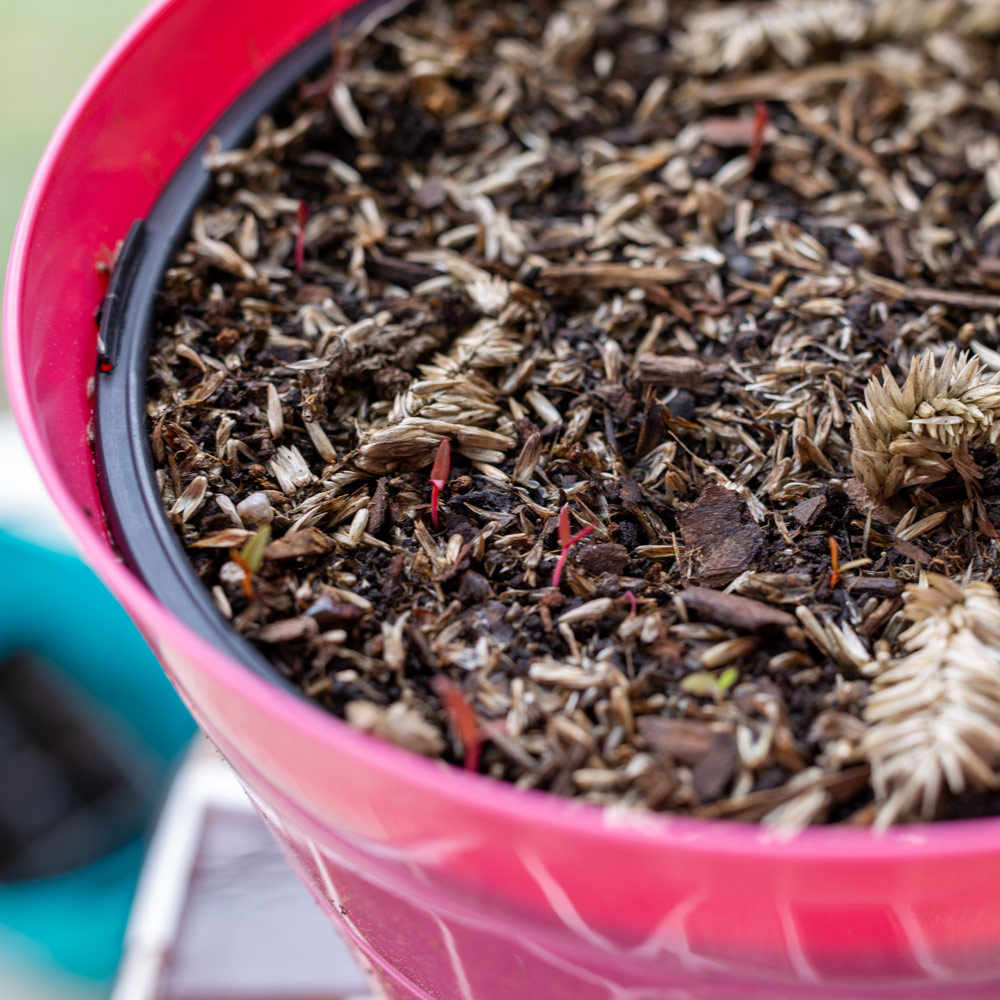
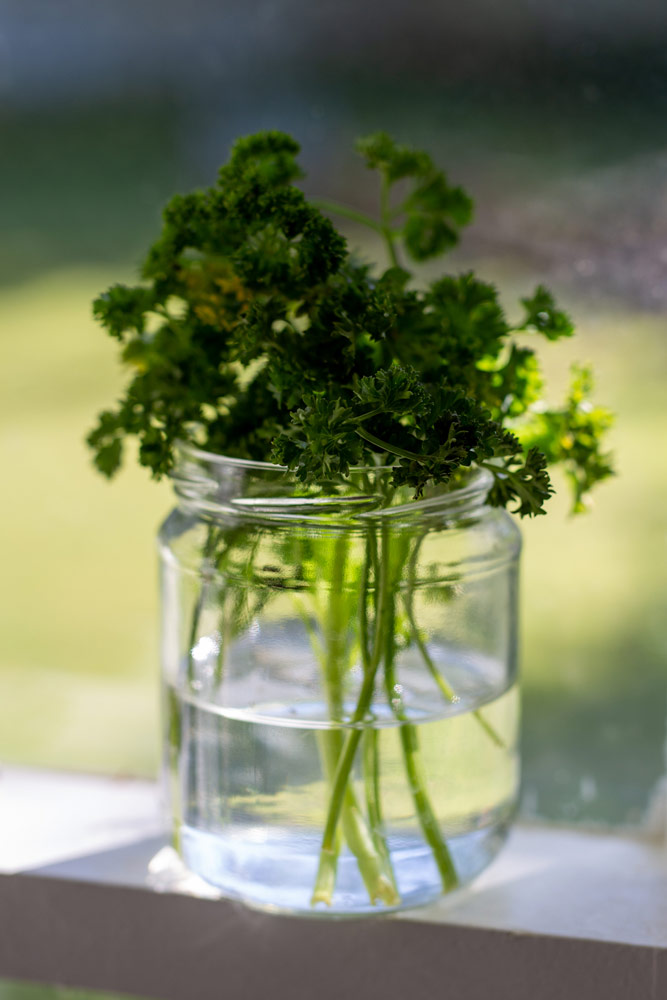
New use for old bottles
- To mix your chemicals in a hurry – designate a container and mark an appropriate dosage on the bottle (you won’t have to re-learn calculus to mix 1.5 teaspoons into 7 quarts every time you run out of premixed neem oil!)
- Hair product spray bottles make great small scale applicators! The fine mist can be evenly applied to household plants and seedlings.

